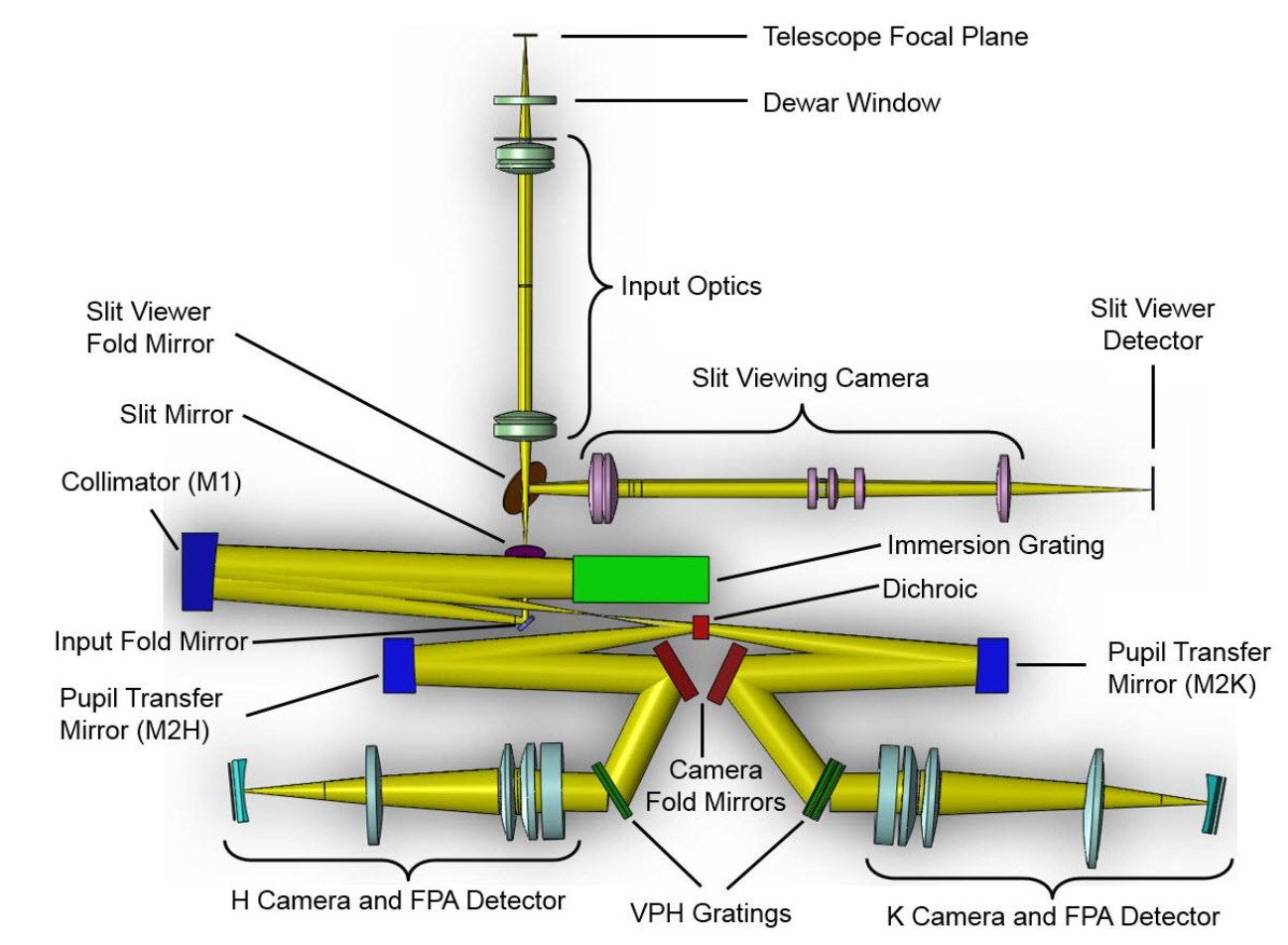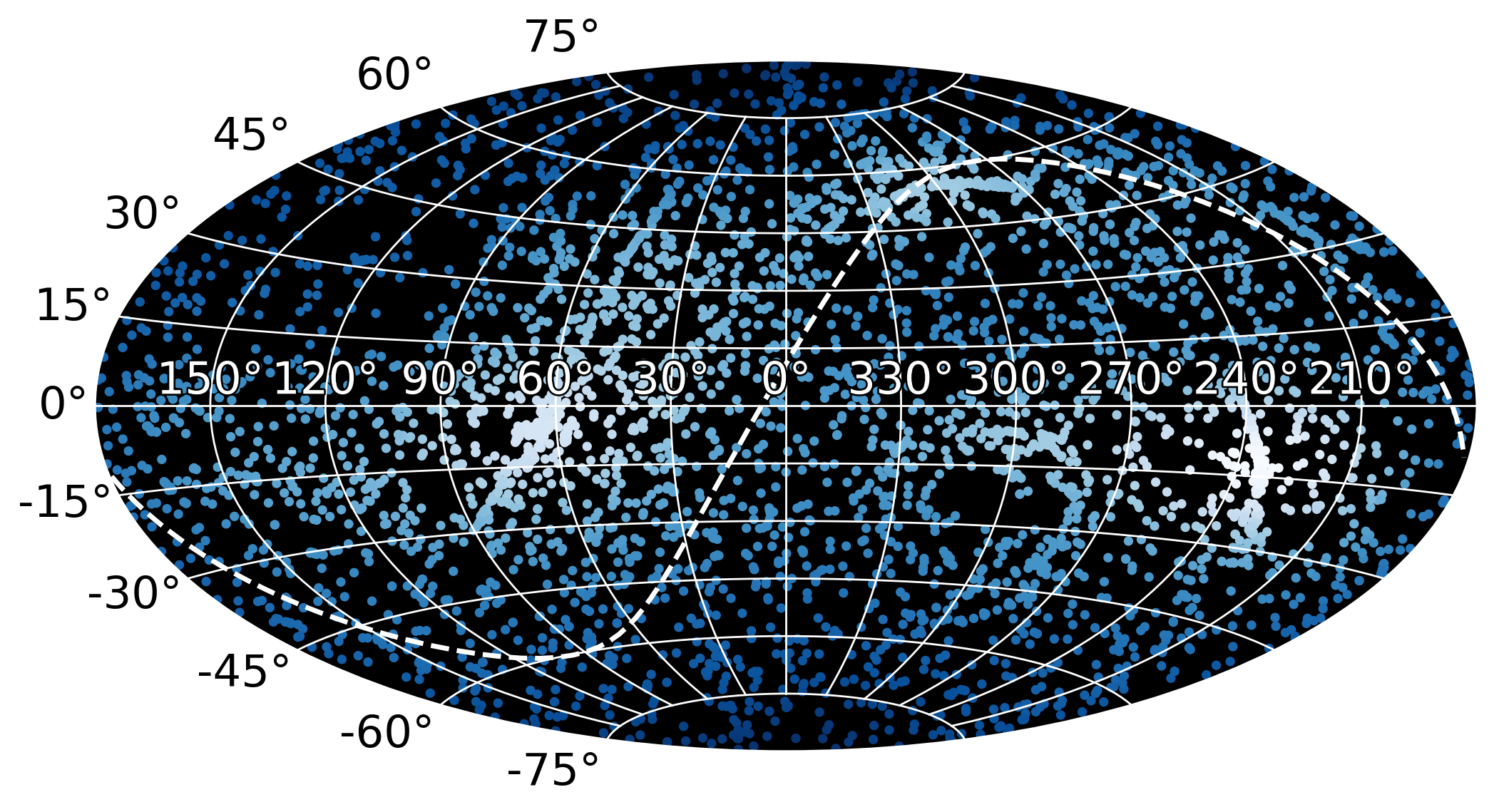IGRINS
The Immersion GRating INfrared Spectrometer (IGRINS) is a compact high-resolution near-infrared spectrograph which can cover the entire wavelength range between 1.45 and 2.45μm in a single exposure with a resolving power of R~45,000. IGRINS was built in a partnership between the University of Texas at Austin and the Korea Astronomy and Space-Science Institute (KASI) with the expectation that it would be deployed to multiple facilities.

Since commissioning in July 2014, IGRINS has been scheduled for more that 1000 nights combined on the 2.7m Harlan J. Smith Telescope at McDonald Observatory, the 4.3m Discovery Channel Telescope (now the Lowell Discovery Telescope) at Lowell Observatory, and the 8.1m Gemini South telescope. Lastly, IGRINS is a prototype for the future instrument on the Giant Magellan Telescope, GMTNIRS.
Check out all of the science with IGRINS and our curated collection of high SNR spectra in the IGRINS Spectral Library!
The Raw & Reduced IGRINS Spectral Archive (RRISA)
The Raw & Reduced IGRINS Spectral Archive (RRISA) features all publicly available IGRINS data taken between August 2014 and May 2023 including both the raw .fits files and the reduced data products output from the IGRINS PLP v3. RRISA features spreadsheets with information about IGRINS observations and IGRINS targets that can be easily searched and sorted. These spreadsheets also include links for users to download IGRINS data either by night (for raw frames) or per target (for reduced data products). Finally, the RRISA XMatch sheet includes additional information about IGRINS targets from the SIMBAD, 2MASS, Gaia DR3, APOGEE2-DR17, and PASTEL catalogs that users can use to build subsamples of IGRINS observations and search for targets within existing IGRINS observations easier.
As of May 2023, IGRINS has completed almost 18,000 individual observations of both science targets and telluric standards. RRISA features IGRINS data from more than 1000 nights on-sky, resulting in 3,400 unique target observations from over 3,000 hours of total science time. RRISA also includes IGRINS observations of around 800 distinct A0V standard stars. The spatial distribution of the IGRINS observations RRISA currently encompasses are in the following image:

The Raw component of RRISA includes all of the frames IGRINS observed before June 2023--flats, darks, arcs, targets & telluric standards--in their unedited form. However, we caution that the Raw component of RRISA is exactly that, unedited. Users should not expect all target names to be searchable or coordinates to be correct (particularly for observations at McDonald Observatory). The Reduced component of RRISA includes only IGRINS data products that have been reduced using the IGRINS PipeLine Package v3 (IGRINS PLP). IGRINS data that may require custom extractions like multiple objects on the slit or extended sources are often not included in the reduced component of RRISA. The XMatch component of RRISA includes access to the IGRINS reduced data products as well as additional information provided from SIMBAD, 2MASS, Gaia DR3, APOGEE2-DR17, and PASTEL catalogs for each target when it is available. For more detail on what each component of RRISA includes check out the corresponding tabs above!
Required Citation
We ask that users of IGRINS and those who access IGRINS data via RRISA cite the following instrumentation papers for IGRINS in their publications:
- Yuk+ 2010: Preliminary design of IGRINS (Immersion GRating INfrared Spectrograph)
- Wang+ 2010: Manufacturing of silicon immersion gratings for infrared spectrometers
- Gully-Santiago+ 2012: Near-infrared metrology of high-performance silicon immersion gratings
- Moon+ 2012: Immersion grating mount design for IGRINS and GMTNIRS
- Han+ 2012: Alignment based on a no adjustment philosophy for the Immersion Grating Infrared Spectrometer (IGRINS)
- Park+ 2014: Design and early performance of IGRINS (Immersion Grating Infrared Spectrometer)
- Oh+ 2014: Mechanical design of mounts for IGRINS focal plane arrays and field flattening lenses
- Jeong+ 2014: Characterization and optimization for detector systems of IGRINS
- Mace+ 2016: 300 nights of science with IGRINS at McDonald Observatory
- Mace+ 2018: IGRINS at the Discovery Channel Telescope and Gemini South
We ask that users who access IGRINS data via RRISA also cite the RRISA paper and the IGRINS PLP v3:
- Sawczynec+ 2025: 10 Years of Archival High-resolution NIR Spectra: The Raw and Reduced IGRINS Spectral Archive (RRISA)
- Kaplan+ 2024: IGRINS PLP v3 on Zenodo
The standard acknowledgement for IGRINS must be in every publication using IGRINS data:
“This work used The Immersion Grating Infrared Spectrometer (IGRINS) was developed under a collaboration between the University of Texas at Austin and the Korea Astronomy and Space Science Institute (KASI) with the financial support of the US National Science Foundation under grants AST-1229522, AST-1702267 and AST-1908892, McDonald Observatory of the University of Texas at Austin, the Korean GMT Project of KASI, the Mt. Cuba Astronomical Foundation and Gemini Observatory."
For users who access IGRINS data via RRISA the RRISA acknowledgement also must be included in the publication:
"The RRISA is maintained by the IGRINS Team with support from McDonald Observatory of the University of Texas at Austin and the US National Science Foundation under grant AST-1908892.”
Internal Referee
Authors should inform the IGRINS team of the submission of all papers, refereed and non-refereed, at submission, giving the title, journal, volume, author list, and paper draft. This allows us to track instrument use for grant requirements.
The IGRINS team has an internal refereeing process for observing and instrumentation papers. Since we verify the representation and use of IGRINS in all published papers, it is in the best interest of the author to provide us with a copy at submission in order to ensure that the above guidelines have been followed. We strongly recommend all papers using IGRINS data or technical information that the authors plan to submit to a refereed journal go through the IGRINS internal refereeing process. Papers for non-refereed conference proceedings may also make use of this service. First authors should submit papers that are ready for publication directly to igrins.contact [at] gmail.com for comment. Revisions in response to these comments can be made at the discretion of the authors.
IGRINS-2
IGRINS-2 is a near identical copy of IGRINS that is currently being commissioned as a facility instrument for Gemini North. You can learn more about IGRINS-2 and see when IGRINS-2 will be available for proposals by checking out the Gemini Observatory IGRINS-2 instrument page.
GMTNIRS
We also invite users to check out the following papers on IGRINS' successor, GMTNIRS:- Jaffe+ 2006: GMTNIRS: the high resolution near-IR spectrograph for the Giant Magellan Telescope
- Lee+ 2010: GMTNIRS (Giant Magellan Telescope near-infrared spectrograph): design concept
- Beets+ 2012: GMTNIRS mechanical design
- Jaffe+ 2014: GMTNIRS (Giant Magellan Telescope Near-Infrared Spectrograph): optimizing the design for maximum science productivity and minimum risk
- Jacoby+ 2014: Status of the instrumentation program for the Giant Magellan Telescope
- Jacoby+ 2016: Instrumentation progress at the Giant Magellan Telescope project
- Jaffe+ 2016: GMTNIRS: progress toward the Giant Magellan Telescope near-infrared spectrograph
- Kidder+ 2018: Manufacturing silicon immersion gratings on 150-mm material